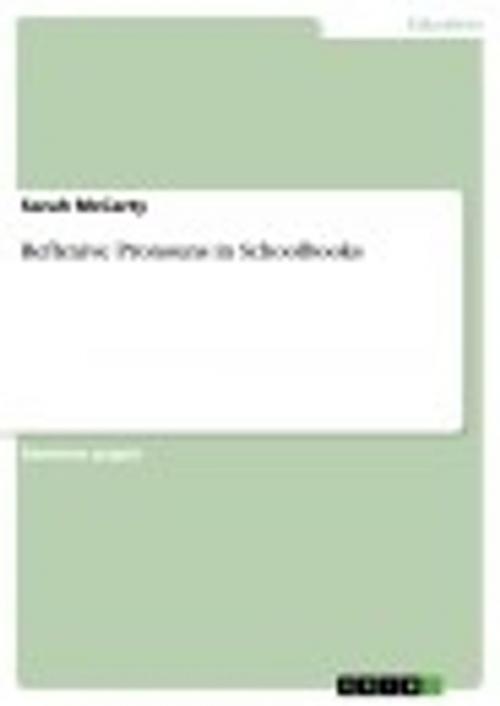Reflexive Pronouns in Schoolbooks
Nonfiction, Reference & Language, Study Aids, ESL, Foreign Languages| Author: | Sarah McCarty | ISBN: | 9783640772605 |
| Publisher: | GRIN Publishing | Publication: | December 8, 2010 |
| Imprint: | GRIN Publishing | Language: | English |
| Author: | Sarah McCarty |
| ISBN: | 9783640772605 |
| Publisher: | GRIN Publishing |
| Publication: | December 8, 2010 |
| Imprint: | GRIN Publishing |
| Language: | English |
Seminar paper from the year 2009 in the subject English - Pedagogy, Didactics, Literature Studies, grade: 1,0, University of Frankfurt (Main) (Institut für England- und Amerikastudien), course: Theory of Anaphora in Context , language: English, abstract: In this term paper I will investigate whether the implementation of reflexive pronouns through seventh grade English-schoolbooks is sufficient to let students understand and eventually use this phenomenon correctly. In the first part of this paper, I will begin with introducing the phenomenon. Here, I will give a short overview of how reflexive pronouns developed. Furthermore, I will present two different acknowledged theories (Chomsky and Reinhart & Reuland) and their conditions on reflexive pronouns. I will then show the two different usages of this phenomenon and will give examples of cases which are somewhat different from the common way of using it. In the second part, I will present the explanations and rules as they are given in the three most commonly used schoolbooks here in Hesse to show how reflexive pronouns are implemented. In part three, I will investigate in how far these rules are sufficient to explain the examples given in those schoolbooks respectively. I will furthermore analyze examples given in Mary Shelley's 'Frankenstein' and Oscar Wilde's 'The Canterville Ghost', which are suggested for the use in seventh grade. Here, I will rather put my focus on somewhat more complex examples in order to find out whether those short rules apply for them as well. I will then conclude, whether my assumption that the explanations in these schoolbooks are not sufficient can be verified.
Seminar paper from the year 2009 in the subject English - Pedagogy, Didactics, Literature Studies, grade: 1,0, University of Frankfurt (Main) (Institut für England- und Amerikastudien), course: Theory of Anaphora in Context , language: English, abstract: In this term paper I will investigate whether the implementation of reflexive pronouns through seventh grade English-schoolbooks is sufficient to let students understand and eventually use this phenomenon correctly. In the first part of this paper, I will begin with introducing the phenomenon. Here, I will give a short overview of how reflexive pronouns developed. Furthermore, I will present two different acknowledged theories (Chomsky and Reinhart & Reuland) and their conditions on reflexive pronouns. I will then show the two different usages of this phenomenon and will give examples of cases which are somewhat different from the common way of using it. In the second part, I will present the explanations and rules as they are given in the three most commonly used schoolbooks here in Hesse to show how reflexive pronouns are implemented. In part three, I will investigate in how far these rules are sufficient to explain the examples given in those schoolbooks respectively. I will furthermore analyze examples given in Mary Shelley's 'Frankenstein' and Oscar Wilde's 'The Canterville Ghost', which are suggested for the use in seventh grade. Here, I will rather put my focus on somewhat more complex examples in order to find out whether those short rules apply for them as well. I will then conclude, whether my assumption that the explanations in these schoolbooks are not sufficient can be verified.















